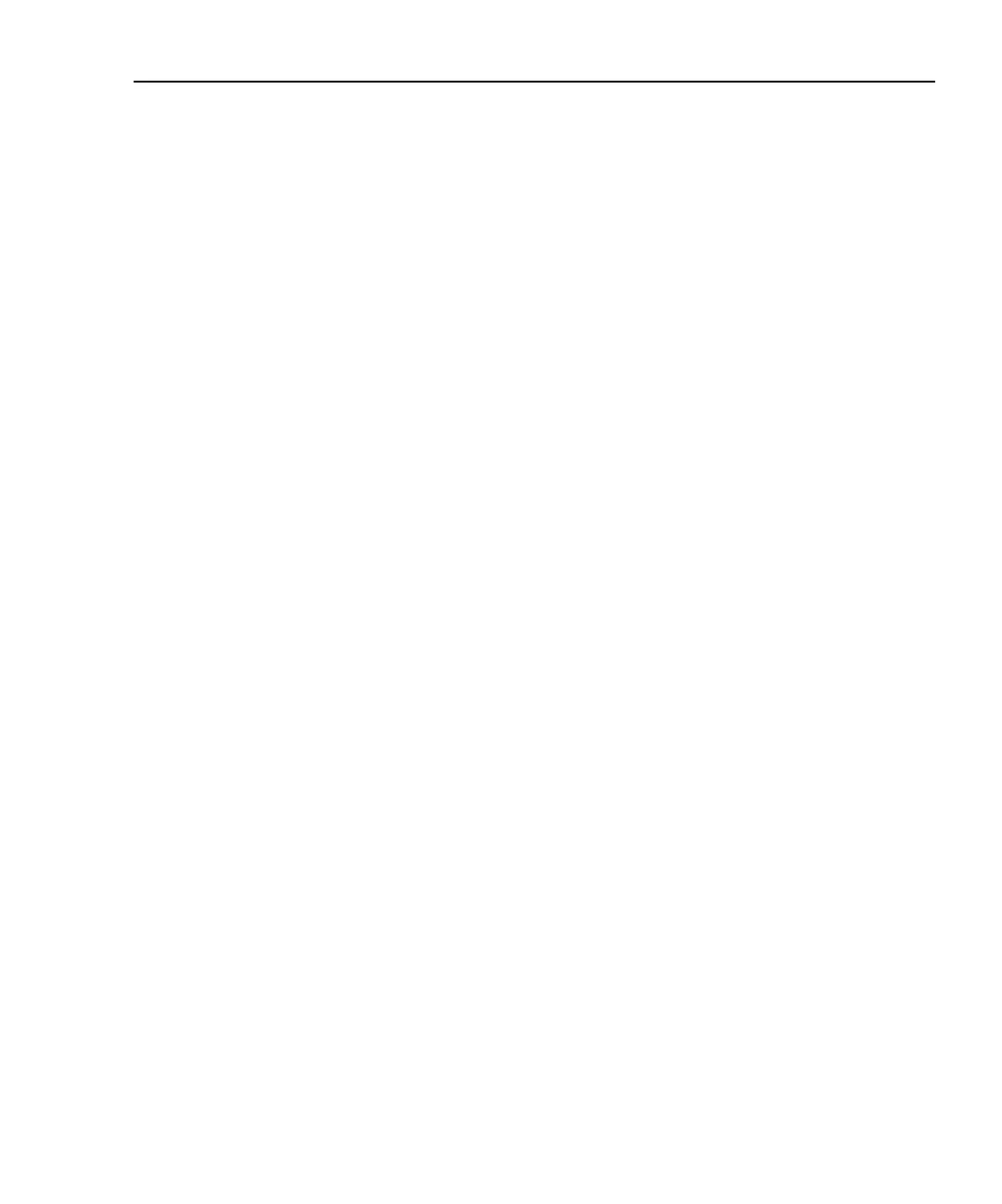Model 2701 User’s Manual Limits and Digital I/O 9-13
NOTE When measurements are performed, the readings are fed to other enabled
operations, including Limits. Appendix D explains “Data flow (remote
operation)” and the commands used to read the result of limit tests.
Reference
a. CALCulate3:LIMit1:STATe <b> [, <clist>]
CALCulate3:LIMit2:STATe <b> [, <clist>]
Unlike front panel operation, Limit 1 and Limit 2 can be controlled (on/off)
separately for remote programming. The front panel limit indicators are affected as
follows:
Limit 1 enabled — The front panel HIGH/IN/LOW indicators work the same as
they do for front panel operation.
Limit 1 disabled and Limit 2 enabled — The status indicators pertain to Limit 2.
When the reading is within Limit 2, the message “I2” is displayed. When the
reading reaches or exceeds the high or low limit, the HIGH or LOW annunciator
will turn on and the number “2” will be displayed.
NOTE When limits are disabled from the front panel, both Limit 1 and Limit 2 disable
for remote operation.
b. CALCulate3:LIMit1:FAIL?
CALCulate3:LIMit2:FAIL?
These commands are used to query the results of Limit 1 and Limit 2:
0 = Passing (reading within the high and low limits)
1 = Failing (reading has reached or exceeded the high or low limit)
The “1” response message does not tell you which limit (high or low) has been
reached. To determine which limit has failed, you will have to read the
measurement event register (Section 12).
c. CALCulate3:LIMit1:CLEar
CALCulate3:LIMit1:CLEar:AUTO <b>
CALCulate3:LIMit2:CLEar
CALCulate3:LIMit2:CLEar:AUTO <b>
These commands are used to clear the fail (“1”) indications for Limit 1 and
Limit 2. If auto clear is enabled for a limit, the fail indication clears when
instrument operation enters the idle state. With auto clear disabled, the fail
indication will remain until it is cleared by the :CLEar command.
